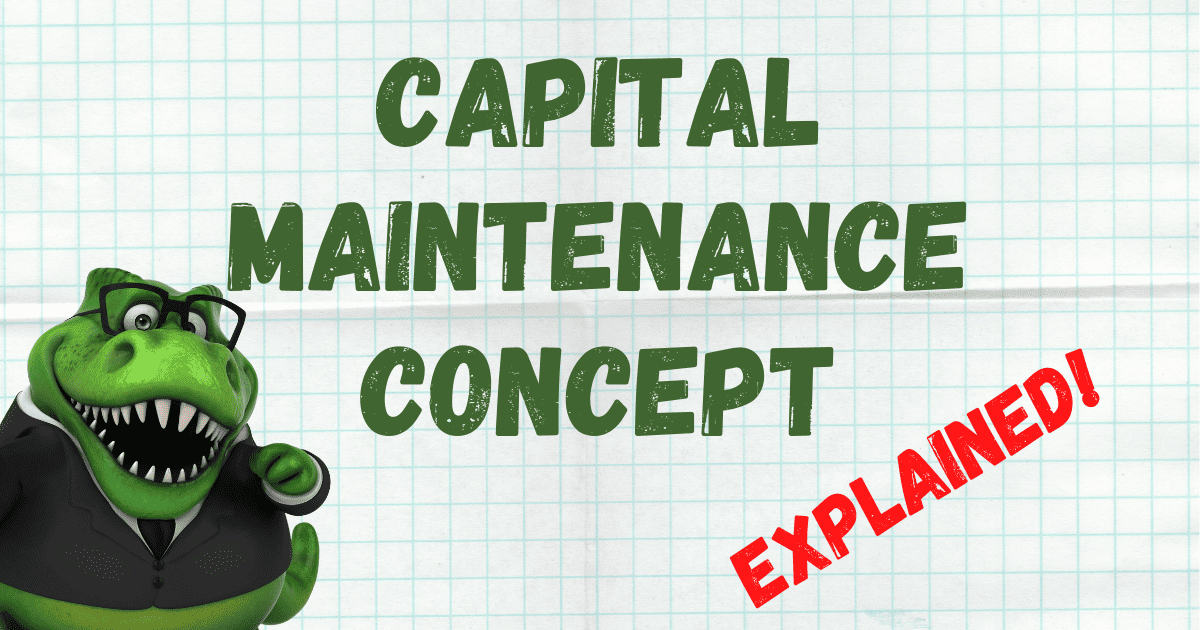The capital maintenance concept is an accounting principle that establishes how a company should determine and maintain its capital or equity. It is an essential concept in financial reporting as it governs the basis for recognizing profits or losses in the financial statements. The concept is based on the idea that the amount of capital invested in a company should be maintained or preserved, and that any profits earned by the company should only be recognized after the capital invested has been fully preserved.
For a video explanation of the capital maintenance concept, watch this:
There are two types of capital maintenance concepts: physical capital maintenance and financial capital maintenance.
Under the physical capital maintenance concept, a company’s capital is considered to be maintained if the physical productive capacity of the company remains the same or increases. In other words, the company’s capital is preserved if it can continue to operate at the same level or expand its operations without reducing the capital that has been invested in the company.
Under the financial capital maintenance concept, a company’s capital is considered to be maintained if the monetary value of the capital remains the same or increases. This means that the company’s capital is preserved if it earns enough profits to compensate for the loss in the value of the capital caused by inflation, changes in exchange rates, or other factors that affect the purchasing power of money.
To understand the capital maintenance concept, let’s consider an example. Suppose a company has an initial capital of $100,000 and it earns a profit of $20,000 in a year. Under the physical capital maintenance concept, the company’s capital is considered to be maintained if it can continue to operate at the same level or expand its operations without reducing the $100,000 invested in the company. In this case, the company would only recognize a profit of $20,000 if it can maintain or increase its physical productive capacity.
Under the financial capital maintenance concept, the company’s capital is considered to be maintained if the monetary value of the $100,000 remains the same or increases. If the inflation rate is 2%, the company would need to earn a profit of $22,000 (i.e., $20,000 + 2% of $100,000) to maintain its capital. In this case, the company would recognize a profit of $20,000 if it can earn enough profits to compensate for the loss in the value of the capital caused by inflation.
In summary, the capital maintenance concept is an important principle in financial reporting that helps companies determine and maintain their capital. The concept provides guidance on when profits should be recognized in the financial statements, based on whether the company’s capital is being maintained in physical or financial terms.

